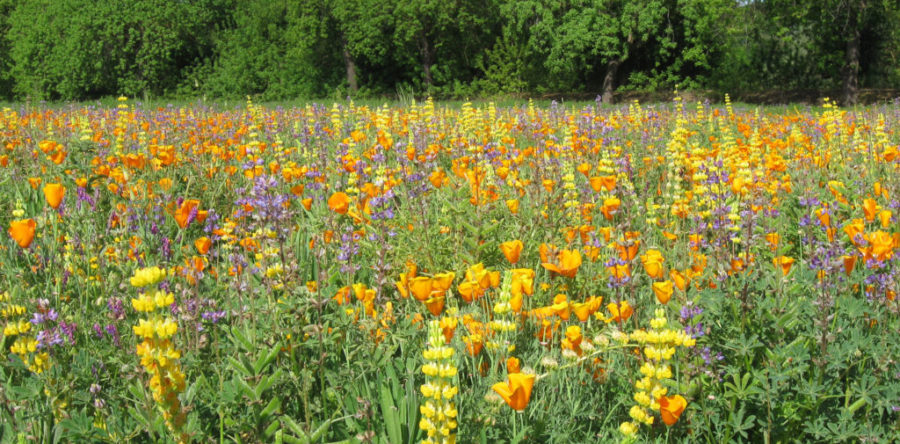Original article by Jim Orem and Ginger Davidson, revised by J. Morgan
The overriding objective is for all colonies to be queen-right, healthy, and well-nourished so they can build up to maximum populations for the onset of your areas major nectar flow. Here in Southeast Indiana, we see black locust as our larger crop that we see bloom between mid-April and mid-May. It's a challenging time for the beekeeper around this time because the weather here can go from 50 and sunny to 30 and snowing! Should you feed the colony pollen right now? It depends. I am reluctant to artificially stimulate my weaker colonies during such times. What if we saw another week of cold temperatures? If the queen laid more eggs than the colony can keep warm, it's an unnecessary burden on the hive. The food stores will also get hit harder, expending them faster than you might expect. It's prime time for starving bees... so get out there on each warm day to check things.
Around here, we look at Mother's Day as the safe time to plant our gardens... when the potential for frost is unlikely. If you feed your bees pollen and sugar water, there will be a point where you will decide it's time to push the hives and get them going. When you do, keeping a fine balance between the growing population and the amount of space available becomes more important. It will be swarm-control time.
On a calm, warm day go through your hives and do a thorough inspection.
- Remove mouse guards? I have moved towards using 3/8" hardware cloth over my entire entrance. This allows bees (and not mice) to use the full entrance as they need.
- Replace poor quality frames or brood frames with new comb or foundation?
- Move brood down (if you can), honey frames to the side, and empty comb over-head. Note: Both boxes will probably be filling up with brood by mid-April. In many cases, the queen may start heading down on her own to find more space to lay.
- Clean up
bottom boards if you haven't already.
Is it time to make splits? Each split will require a new queen. Before your queen emerges, mature drones are needed. Drones are mature 8-10 days after they emerge and hang out on the edge of the brood nest. Queens prefer sunny, 75F degree days, with winds less than 10mph. Use the splits to replace winter losses or increase your hive numbers. If increasing your hive numbers, pick out your next location and position your equipment.
Splits are a great way to create increase or replacement nucs. It also helps facilitate a robust honey crop and is a form of varroa control as it disrupts the brood with what is called a brood-break.
Consider adding disease free dead-out brood boxes to booming two-story hives in anticipation of making splits with them when your new queens arrive. It will relieve congestion and give these overly populous hives something to use and will make an excellent split later.
If you already have queen cells, what kind are they: swarm, emergency, or supersedure? Note: This can also indicate the timing is right to start making queens. What will you do with the queen cells?
- Move them to make nucs or splits.
- Try to cut them all out and keep rechecking.
- Make a nuc with the queen mother.
- Let the bees bee.
Place swarm traps around mid to late April.
Get on swarm call lists, register with the state beekeeping clubs, and get on SIBA beekeeper locator map.
If you want to give your hives a boost, you can feed pollen patties and 1:1 sugar water to stimulate brood-rearing and wax-building. Caution! Watch for Small Hive Beetle (SHB) laying eggs in the pollen patties. Put on a very small piece and see if it's gone the next time you get in the hive. If the bees don't eat it fast enough, SHB can move in fast. DISCONTINUE stimulative sugar-feeding before supering.
Wax moth and SHB activity dramatically picks up when the temperature rises, keep an eye on your stored supers – especially ones that contained pollen or brood. Leftover honey frames should be added to live colonies, frozen or put under Paramoth before small hive beetle moves in and ruins them.
Those of you using Paramoth or other products to store your drawn comb under for wax moth protection should be sure to air out those supers and frames two weeks before you put them on a hive.
Participate in the Bee Informed Partnership Winter Loss Survey. The Bee Informed Partnership is an extension project that endeavors to decrease the loss of managed honey bee colonies. You can find the survey by going to BeeInformed.org and clicking on the big yellow box that says ‘Participate Now'.
See anything we missed? Comment below, or tell us on our Facebook page!




2 Responses